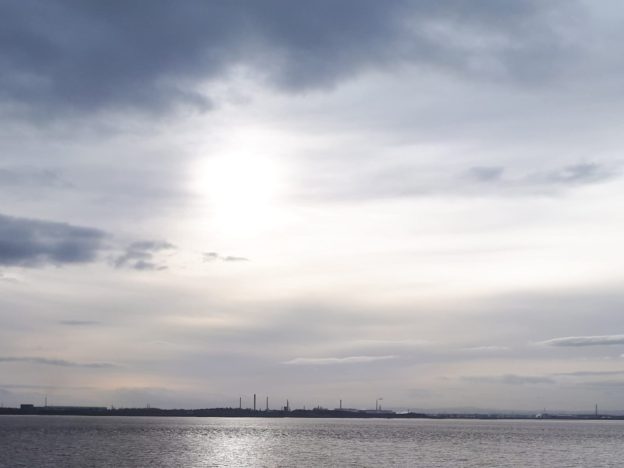I met Dogen Zenji once,
late October by the river,
the misting end of
an Autumn day.
He was ‘just sitting’,
on a bench,
looking west
toward the distant mountains.
A ship moved slowly upstream
against the ebbing tide.
“Do you suppose”, he said,
“that it is the ship, the river
or the mountains that move?”
I stood up as if to go.
He gestured me to sit again.
Sun setting,
the river alight.
Shielding his eyes
against the brilliance
he said quietly
“The sun never gets wet,
and the river is not disturbed or dried out”.
Nothing more to be said,
an hour passed in silence.
A sudden coolness in the air
“Can I drop you off somewhere?” I asked.
“Thank you” the master said smiling,
“but I am already dropped off”.
I never saw him again
but on the bench,
an inscription later appeared.
Eihei Dogen 1200-1253
‘He loved this place’
John, Suigen
I have sometimes wondered what it would be like to meet one of the key historical figures from the zen tradition in a modern everyday situation.
“What if Buddha was one of us?
just a slob like one of us?
just a stranger on the bus?
trying to make his way home (with apologies to Joan Osborne)
Of course buddha is each and everyone one of us but how would we recognise the Buddha on the street or at Tescos? Would we recognise Bodhidharma if he were staring at a wall in the High Street, wearing combat trousers and T shirt, with a sleeping dog and a cap of loose change by his side?
Would we recognise Dogen Zenji, a wandering monk- poet, reciting his enigmatic and sometimes impenetrable verse to anyone who took the time and trouble to listen? Dogen often used vivid and poetic imagery to point to a reality beyond the reach of the discriminating, rational mind. I imagine he might have used these images often, not just with monks and students but in chance encounters with ordinary people.
I encountered the old boy by the river in Liverpool. He was sitting on a bench, contemplating the scene of the setting sun, the distant mountains and the flow of life on the water and questioned “What is it that moves?”
In ‘Genjokoan’, Dogen uses an image of a person sailing on a calm sea, watching the coastline. From this traveller’s view it might seem that the coast was moving. Only when looking at the water does he realise that the boat and he himself are moving. (This experience seems similar to being on a train in a station and thinking that the train opposite is moving. Only when the last carriage of the train opposite passes and we see the platform is it clear that it is we who are the moving.)
He concludes the verse on the moving boat with this comment: “Similarly when we perceive the body and mind in a confused way and grasp all things with a discriminating mind, we mistakenly think that the self nature of mind is permanent. When we intimately practice and return right here, it is clear all things have no (fixed) self.”
It seems that when we practice wholeheartedly with effort we see that we, the whole world, including the people and beings around us, are constantly changing; never still. With this insight we are less likely to be fooled by our fleeting impressions of a situation or of another person. We are less likely to cause suffering by reacting impulsively to situations, based on the delusion of a fixed unchanging reality.
Another of Dogen’s famous and beautiful images is that of the ‘moon in a dew drop’. According to Shohaku Okumura in ‘Realising Genjokoan’, Dogen wrote about this relationship in a short poem, titled ‘Impermanence’
“What is this world like?
As a waterfowl shakes its bill,
On each drop of water,
The moon is reflected”
My modern Dogen sees the sun reflected in the river and makes the same observation: to have this sort of insight does not fundamentally change the nature of anything, it simply makes vividly clear our relationship with all things.

